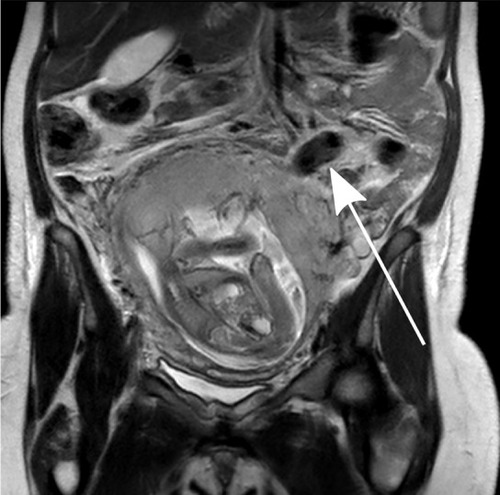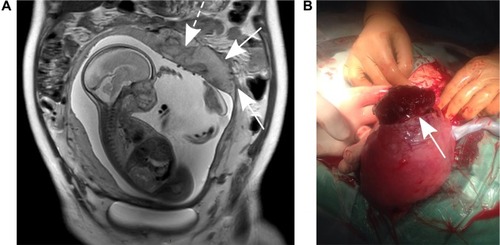Figures & data
Figure 1 MRI of placenta increta (third pregnancy).
Abbreviation: MRI, magnetic resonance imaging.

Figure 2 MRI of placenta percreta (fourth pregnancy).
Abbreviation: MRI, magnetic resonance imaging.

Video S1 Sonography of placenta percreta (fourth pregnancy).
Notes: Transabdominal two-dimensional ultrasound in the transverse plane showing an abnormal placenta with thinning of the myometrium in the left posterior uterine wall, indicated by an asterisk. Similar findings are seen in the longitudinal plane in addition to fundal placental lacunas (arrow head) with increased blood flow by color Doppler scanning.
